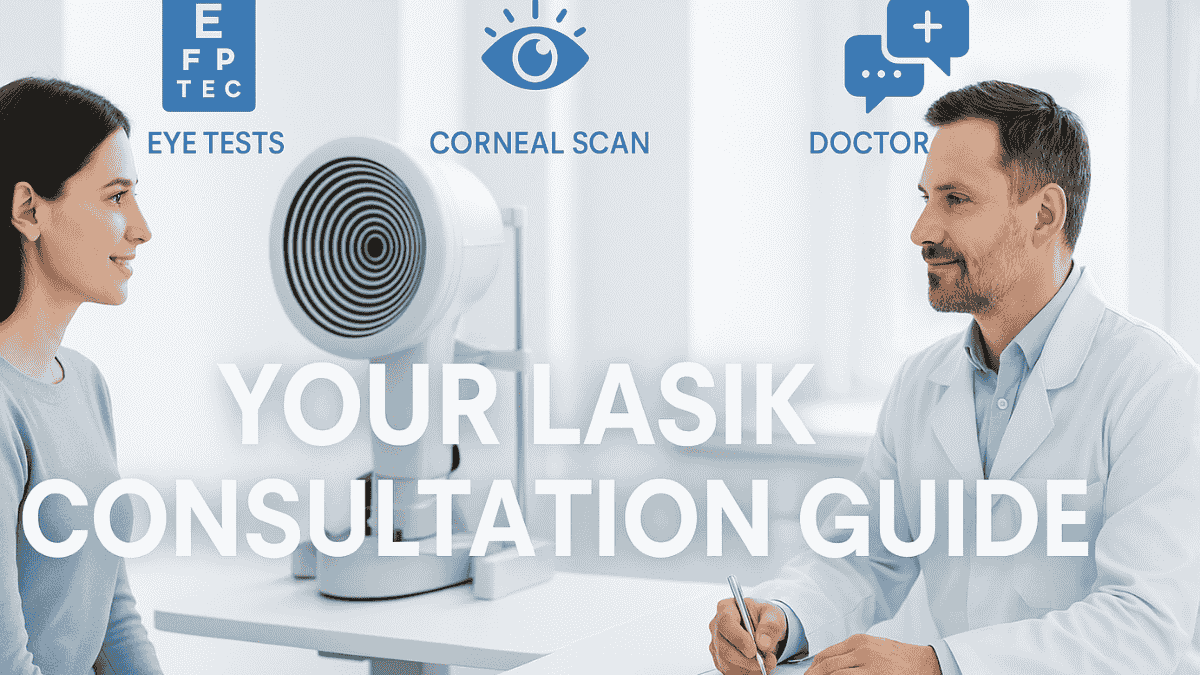
Thinking about life without glasses or contacts? It’s a pretty exciting thought for many people. If you’re considering LASIK eye surgery, the very first step on that journey is your LASIK consultation. This meeting is very important, perhaps more than you realize, because it is fundamental to the entire process of your potential LASIK vision correction. You might feel a little nervous or unsure what this first LASIK consultation really involves, but that’s completely normal.
So, what really goes on during a LASIK consultation? This appointment involves more than a brief discussion. This appointment is a thorough check-up specifically for your eyes and your vision goals. The eye doctor and their team at the eye care center will run several tests as part of this detailed eye exam, crucial for any potential eye surgery.
They want to see if LASIK is a safe and good option for you, making you a suitable candidate for laser eye surgery. This is your chance to get all your questions answered by a professional LASIK surgeon. Think of this initial surgery consultation as the gateway to understanding if LASIK surgery is the right eye treatment for you.
Think of it like this: you wouldn’t buy a car without a test drive, right? The consultation is similar. It’s your opportunity to understand the LASIK procedure, the clinic, and the surgeon before you make any big decisions. You’ll learn a lot about your own eyes and eye health during this process, including any underlying eye conditions.
Table of Contents
Why is a LASIK Consultation So Important?
This initial meeting is much more than a simple appointment; it’s a comprehensive LASIK evaluation. The main reason a LASIK consultation is vital is to determine if you’re actually a good candidate for the LASIK surgery. Not everyone’s eyes are suited for LASIK, and this vision correction consultation helps clarify that. Factors like the thickness of your cornea, your pupil size, the stability of your prescription, and your overall eye health all play a part in determining if you are a LASIK candidate.
These are things only a detailed eye exam, often more thorough than a general eye check-up, can show. The LASIK surgeon needs this information to plan any potential laser eye surgery. Understanding your specific refractive error is a key component of this assessment.
Also, this is where you learn about the real risks and benefits of LASIK, specific to your situation and previous eye history. General information online is helpful. But, your eye doctor can explain how LASIK could work for your eyes and lifestyle, discussing whether it’s the best vision correction option for you. This personalized information, crucial for anyone considering correction surgery, is something you just can’t get from a website alone. The FDA outlines potential risks associated with LASIK that your doctor will discuss.
Your consultation also allows the doctor to plan a procedure just for you, potentially an all-laser LASIK procedure. Modern LASIK can often be customized to your individual eye characteristics. This planning starts with the detailed measurements taken at your pre-operative consultation. This is how they aim for the best possible outcome for your laser vision.
Preparing for Your LASIK Consultation

Being well-prepared can make your LASIK consultation go smoothly. You’ll also get more out of it when discussing your vision correction goals. There are a few things you can do beforehand to prepare for this important eye surgery consultation. This preparation helps the clinic and helps you feel more confident about the LASIK eye surgery consultation.
First, gather all your vision-related information. Bring your current glasses and any old pairs if you have them. If you wear contact lenses, you’ll need to know your prescription details for each contact lens. It’s also smart to bring a list of any medications you’re taking and a summary of your general health history, including any eye conditions or if you’ve had cataract surgery. Your overall health is relevant to eye surgery, so this information is important for the eye surgeon.
As you research an eye care center, especially if looking online perhaps in a competitive region like the Bay Area, you might also glance at their privacy policy. This policy details how your personal information is managed. Understanding data handling, which can include how cookies enable website features or if information is used for targeted advertising (often outlined in broader terms similar to a Google privacy policy), helps you make informed choices even before your pre-operative consultation. Many clinics also provide patient resources online or as a consultation book, sometimes designed to be compatible with a screen reader for accessibility.
One of the most critical preparation steps involves your contact lenses. Most clinics will ask you to stop wearing your contact lenses for a period before your consultation. For soft contact lenses, this might be one to two weeks. For hard or gas permeable lenses, it could be much longer, sometimes several weeks or even months. Contacts can temporarily change the shape of your cornea, and the doctor needs its natural shape for accurate measurements for the laser eye procedure.
What to Expect Regarding Contact Lens Wear
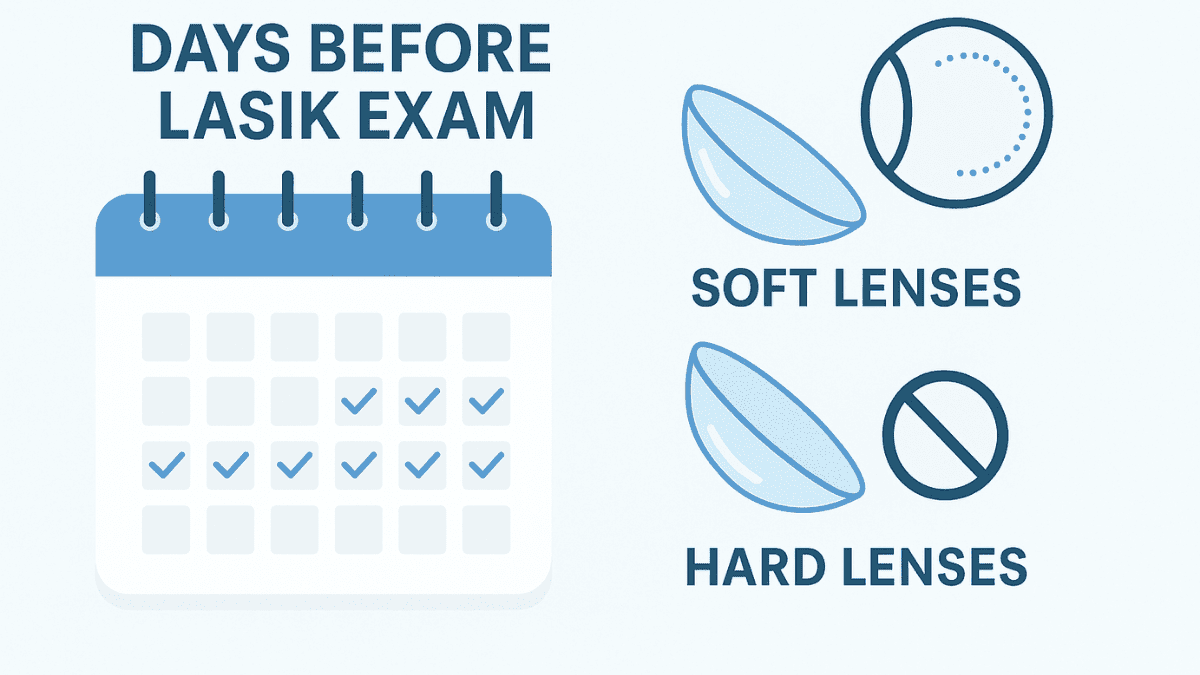
It’s really important to follow the clinic’s instructions about not wearing your contact lenses. Wearing them too close to your appointment can lead to inaccurate readings during the eye exams. This could mean the eye doctor can’t tell if you’re a good candidate. Or, it could affect the surgical plan if you do proceed with the LASIK procedure.
If you forget and wear your contacts, be honest with the clinic. They might need to reschedule your LASIK eye surgery consultation. It’s better to wait and get accurate results than to rush things. This small sacrifice of not wearing contacts ensures the data collected about your corneal shape is as precise as possible, which is essential for any laser LASIK treatment.
Questions to Have Ready
Coming prepared with questions is a great idea for your vision correction consultation. This is your time to learn about the specific LASIK procedure being recommended. Write down anything you’re wondering about LASIK, the LASIK surgeon, the laser technology used, or the recovery. No question is too small or silly if it helps you feel more informed about this type of eye care.
Consider things like the surgeon’s experience, particularly with your type of refractive error, and the type of laser technology used, such as whether they offer all-laser LASIK. You might also want to ask about potential side effects in more detail and what a quick recovery truly entails. Having your questions written down means you won’t forget anything important during the appointment at the care center.
During the LASIK Consultation: A Step-by-Step Look
So, you’ve prepared, and the day of your LASIK consultation has arrived. It helps to know what typically happens during the appointment itself. This way, you’ll feel more at ease. Most consultations, whether it’s a free consultation or a paid one, follow a similar pattern to determine if you are a LASIK candidate.
First, you’ll likely start with some paperwork. This includes your medical history and consent forms for the examination. Then, a technician or an optometrist will usually perform a series of eye tests, which are comprehensive eye exams. These tests are painless but very thorough, designed to gather a lot of data about your eyes and general eye health.
Some common tests include measuring your current glasses or contact lens prescription and checking your vision without correction (visual acuity). They will measure your eye pressure (tonometry) to screen for glaucoma. Corneal topography, which maps the surface of your cornea, is a critical test to detect irregularities like keratoconus. Pachymetry measures your corneal thickness, essential for ensuring enough tissue for the LASIK procedure. Pupillometry measures your pupil size in different lighting conditions, which can be relevant for night vision quality after laser eye surgery. Dry eye testing is also common, as significant dry eye can affect LASIK outcomes and may require dry eye treatment prior to surgery.
Related Article
Dry Eye: Symptoms, Causes and Treatment Options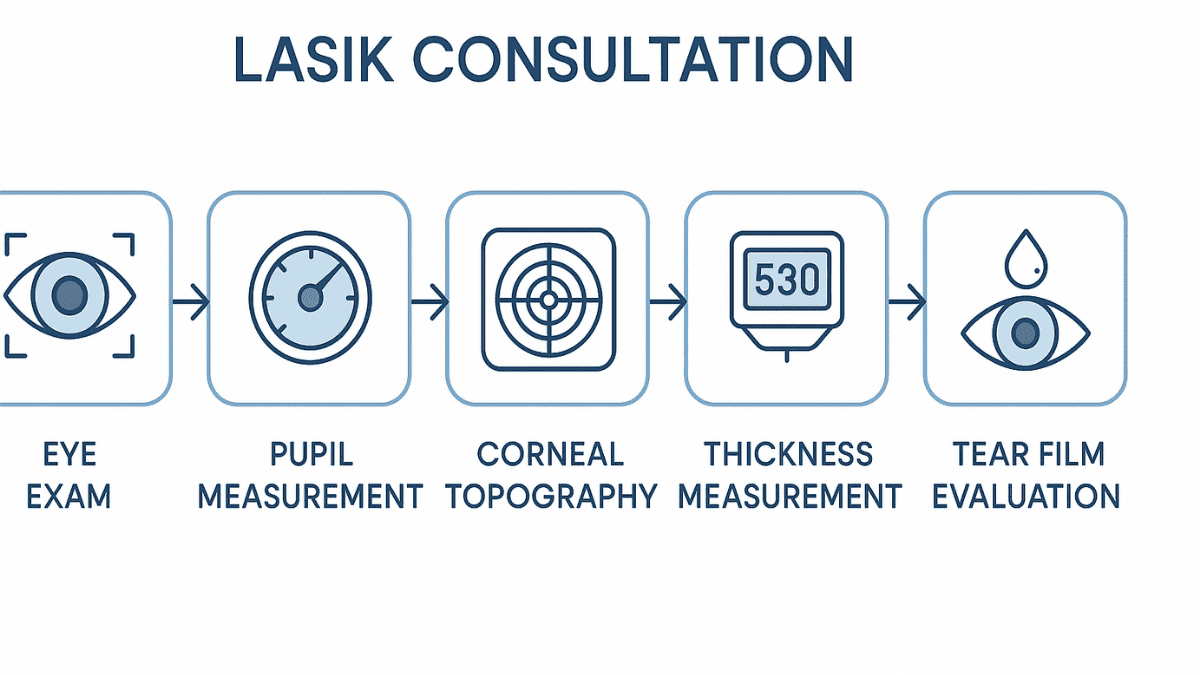
So, you’ve prepared, and the day of your LASIK consultation has arrived. It helps to know what typically happens during the appointment itself. This way, you’ll feel more at ease. Most consultations, whether it’s a free consultation or a paid one, follow a similar pattern to determine if you are a LASIK candidate.
First, you’ll likely start with some paperwork. This includes your medical history and consent forms for the examination. Then, a technician or an optometrist will usually perform a series of eye tests, which are comprehensive eye exams. These tests are painless but very thorough, designed to gather a lot of data about your eyes and general eye health.
Some common tests include measuring your current glasses or contact lens prescription and checking your vision without correction (visual acuity). They will measure your eye pressure (tonometry) to screen for glaucoma. Corneal topography, which maps the surface of your cornea, is a critical test to detect irregularities like keratoconus. Pachymetry measures your corneal thickness, essential for ensuring enough tissue for the LASIK procedure. Pupillometry measures your pupil size in different lighting conditions, which can be relevant for night vision quality after laser eye surgery. Dry eye testing is also common, as significant dry eye can affect LASIK outcomes and may require dry eye treatment prior to surgery.
Related Article
Can You Get LASIK with Thin Corneas? Risks and AlternativesUnderstanding Candidacy During Your LASIK Consultation
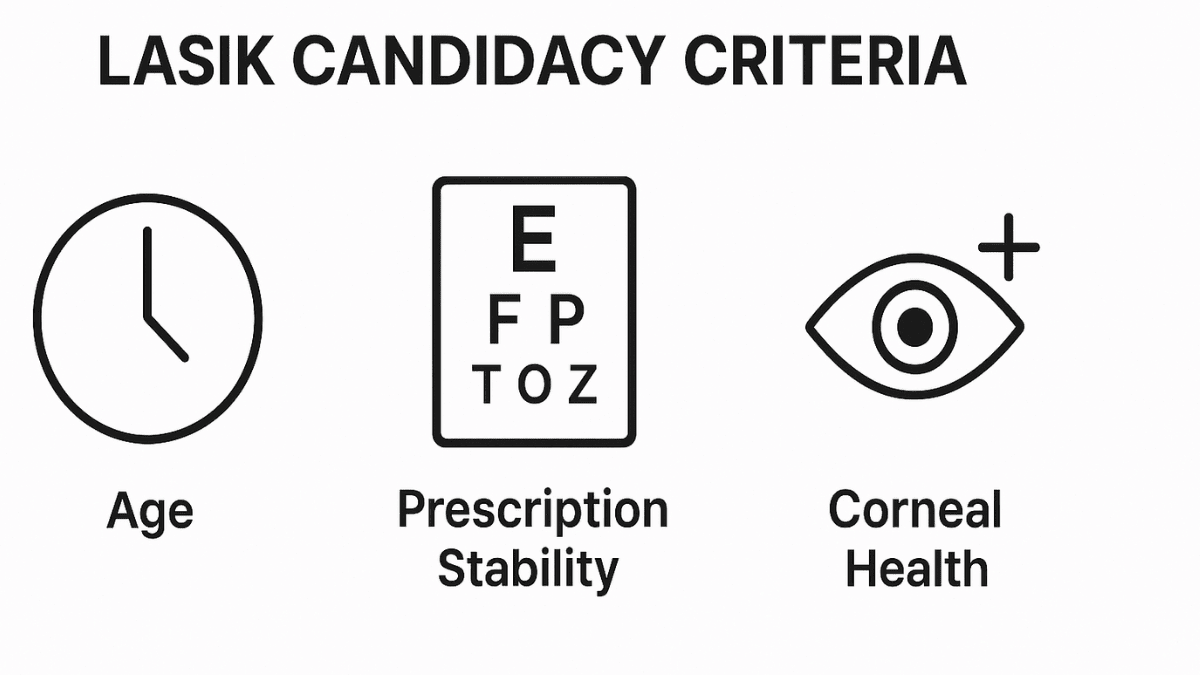
One of the main goals of your LASIK consultation is figuring out if LASIK is right for you, making you a suitable candidate. Many factors go into this decision by the LASIK surgeons. It’s not just about wanting to see better without corrective lenses. Your eyes, previous eye history, and overall health need to meet certain criteria for laser eye surgery.
What makes someone a good candidate for LASIK eye surgery? Generally, you should be at least 18 years old, sometimes older depending on the clinic and the stability of your vision. Your vision prescription, or refractive error, should have been stable for at least a year. This means no big jumps in your glasses or contact lens strength. Stable vision shows your eyes have likely stopped changing significantly.
Your cornea, the clear front part of your eye, must be thick enough for the procedure; typically, a minimum thickness is required, and pachymetry results will confirm this. LASIK involves creating a flap in the cornea and reshaping the tissue underneath with a laser. If your cornea is too thin or has an irregular shape detected by corneal topography, LASIK might not be safe. Healthy eyes are also important. Conditions like severe dry eye, keratoconus (a corneal disease), active eye infections, advanced glaucoma, or significant cataract surgery needs can make LASIK unsuitable. Your general eye health and overall health matter too; certain autoimmune diseases or uncontrolled diabetes might affect healing after any correction surgery.
What if I’m Not a Good Candidate?
It can be disappointing to learn you’re not a good fit for LASIK eye surgery. But, your LASIK consultation, or eye surgery consultation, is precisely for finding this out safely. If LASIK isn’t recommended by the eye surgeon, they will explain why. They might also discuss alternative vision correction procedures or a different vision correction option that could be better for your specific eye conditions.
Options like PRK (photorefractive keratectomy), which doesn’t involve a corneal flap, might be suitable if your corneas are thinner. Implantable Collamer Lenses, such as EVO ICL, are another excellent correction option for certain prescriptions, especially high myopia, and work by placing a biocompatible lens inside the eye. For older individuals, especially those with early cataracts or presbyopia, Refractive Lens Exchange (RLE), also known as lens exchange, involving lens implants might be suggested. Sometimes, simple dry eye treatment can improve your eye health enough to make you a suitable candidate later.
The American Academy of Ophthalmology offers information on various vision correction surgeries. So, even if LASIK isn’t in the cards, there might be other paths to clearer vision discussed at your eye care center. Sometimes, it’s a matter of timing; if your refractive error isn’t stable, you may need to wait. If you’ve had recent laser cataract surgery, the timing for LASIK would also be carefully considered.
Related Article
Safe Alternatives to LASIK: PRK, LASEK, and Ortho‑K Explained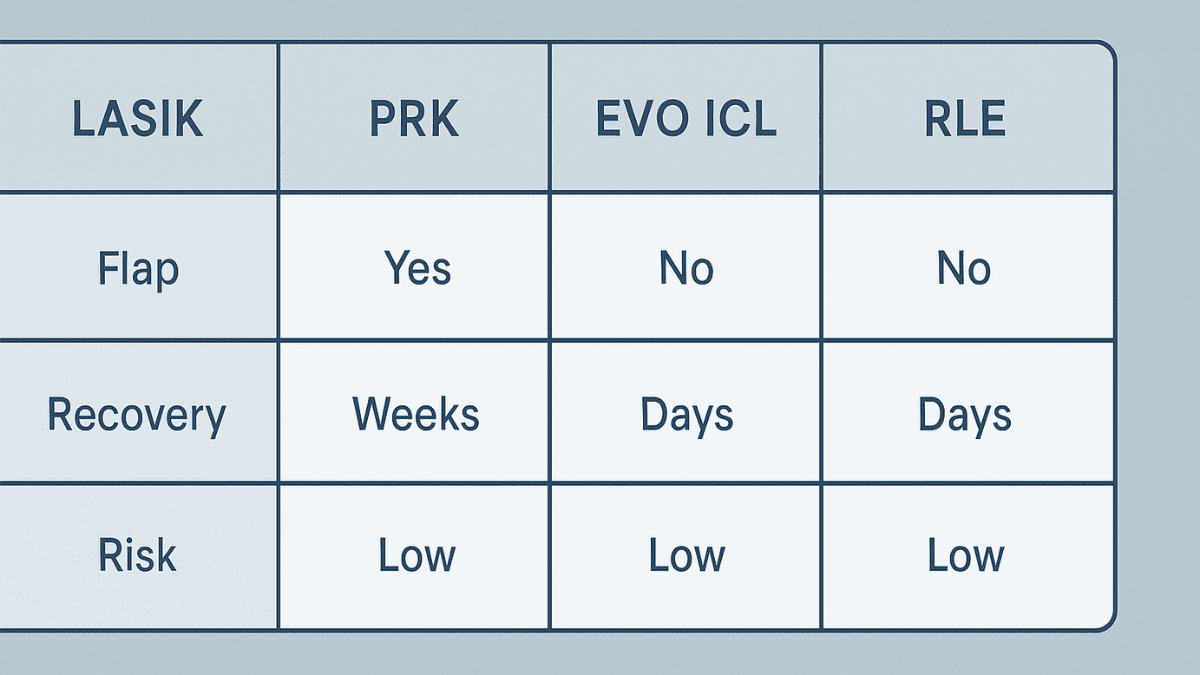
Here’s a brief comparison of some common vision correction options:
| Feature | LASIK | PRK | EVO ICL | RLE (Refractive Lens Exchange) |
|---|---|---|---|---|
| Corneal Flap | Yes | No (epithelium removed) | No | No (natural lens removed) |
| Recovery Time | Quick recovery, often next day | Slower, initial discomfort for a few days | Very quick recovery | Quick recovery, vision stabilizes over weeks |
| Dry Eye Risk | Moderate, often temporary | Lower than LASIK | Very Low | Varies, can treat existing dry eye with specific lens implants |
| Prescription Range | Wide for myopia, hyperopia, astigmatism | Wide, similar to LASIK | Very wide, especially for high myopia | Corrects wide range, including presbyopia |
| Corneal Thickness | Sufficient thickness needed | Less corneal tissue affected than LASIK | Not a primary limiting factor | Not a primary limiting factor |
| Reversibility | No (corneal tissue altered) | No (corneal tissue altered) | Yes (lens can be removed or replaced) | No (natural lens replaced with lens implants) |
The Technology Discussed at Your Consultation
During your LASIK consultation, the eye doctor or LASIK surgeon will likely discuss the laser technology used for the LASIK procedure. Modern laser eye surgery relies on sophisticated equipment for precision and safety. Understanding this can help you feel more confident if you are a LASIK candidate.
Typically, two types of lasers are involved in all-laser LASIK. First, a femtosecond laser is often used to create the corneal flap with exceptional accuracy. This is a very fast laser that uses tiny pulses of energy. Second, an excimer laser is used to gently reshape the cornea under the flap, correcting your specific refractive error. This laser removes microscopic amounts of tissue based on the detailed measurements from your eye exams.
The type of laser technology, including whether it’s the latest generation, can influence outcomes and recovery. The team at the eye care center should explain why they use their particular technology and how it benefits your laser vision correction. Don’t hesitate to ask about their equipment and how it contributes to the safety and effectiveness of the eye treatment for your LASIK vision goals.
What to Expect After Your LASIK Consultation
Once your LASIK consultation, or LASIK eye surgery consultation, is over, you’ll have a lot of information to process. It’s a good idea to take some time to think about everything you learned. Don’t feel rushed to decide about the surgery immediately. Review any materials, like a consultation book or patient resources, the clinic gave you.
If the doctor confirmed you’re a good candidate for LASIK vision correction, the choice to proceed with the eye surgery is yours. Discuss it with family or friends if that helps you. Make sure you feel comfortable with the LASIK surgeon, the clinic or eye care center, and the potential outcomes of the eye treatment. If you have lingering doubts, some clinics might offer a second opinion or a follow-up discussion before you book your surgery consultation.
If you decide to go ahead with LASIK, the next step is usually scheduling your LASIK surgery. The clinic will give you pre-operative instructions. These often include continuing to avoid contact lenses and possibly using certain eye drops to prepare your eyes for the laser eye procedure. You might also be asked to acknowledge a medical disclaimer outlining the terms of the correction surgery.
If you found out you are not a good candidate for LASIK, this is also valuable information. It means you’ve avoided a procedure that might not have been safe or effective for your specific eye conditions. You can then explore the alternative options, like EVO ICL or refractive lens exchange, the eye doctor might have suggested. The key is to find the best vision correction option for your specific vision needs and circumstances, ensuring good long-term eye health.
Remember, this whole process is about empowering you to make the best decision for your laser vision and your life. The LASIK evaluation and subsequent pre-operative consultation are the foundation for that decision. Long-term eye care follow-ups will also be part of the journey to maintain your vision goals.
Conclusion
Your LASIK consultation is far more than just an initial appointment; it’s a critical step towards potentially achieving clear LASIK vision. It’s a comprehensive LASIK evaluation that determines your suitability as a LASIK candidate for the procedure. It educates you about the benefits and risks of laser eye surgery, and gives you a chance to get answers from professional LASIK surgeons.
This in-depth eye exam and discussion of your vision goals are essential. Whether you are deemed a good candidate for traditional LASIK, all-laser LASIK, or an alternative eye treatment like EVO ICL or lens exchange, the information gathered is vital. Understanding your eye health, the specific LASIK procedure, and the laser technology used will empower you.
Attending a thorough LASIK consultation at a reputable eye care center is the most important first step toward potentially clearer vision without full-time reliance on glasses or contact lenses. This eye surgery consultation sets the foundation for your entire vision correction journey, from the initial eye exams to the potential for a quick recovery and lasting results.
A LASIK consultation is a detailed eye evaluation that determines whether you’re a suitable candidate for laser vision correction. It’s crucial for safety and planning a personalized treatment.
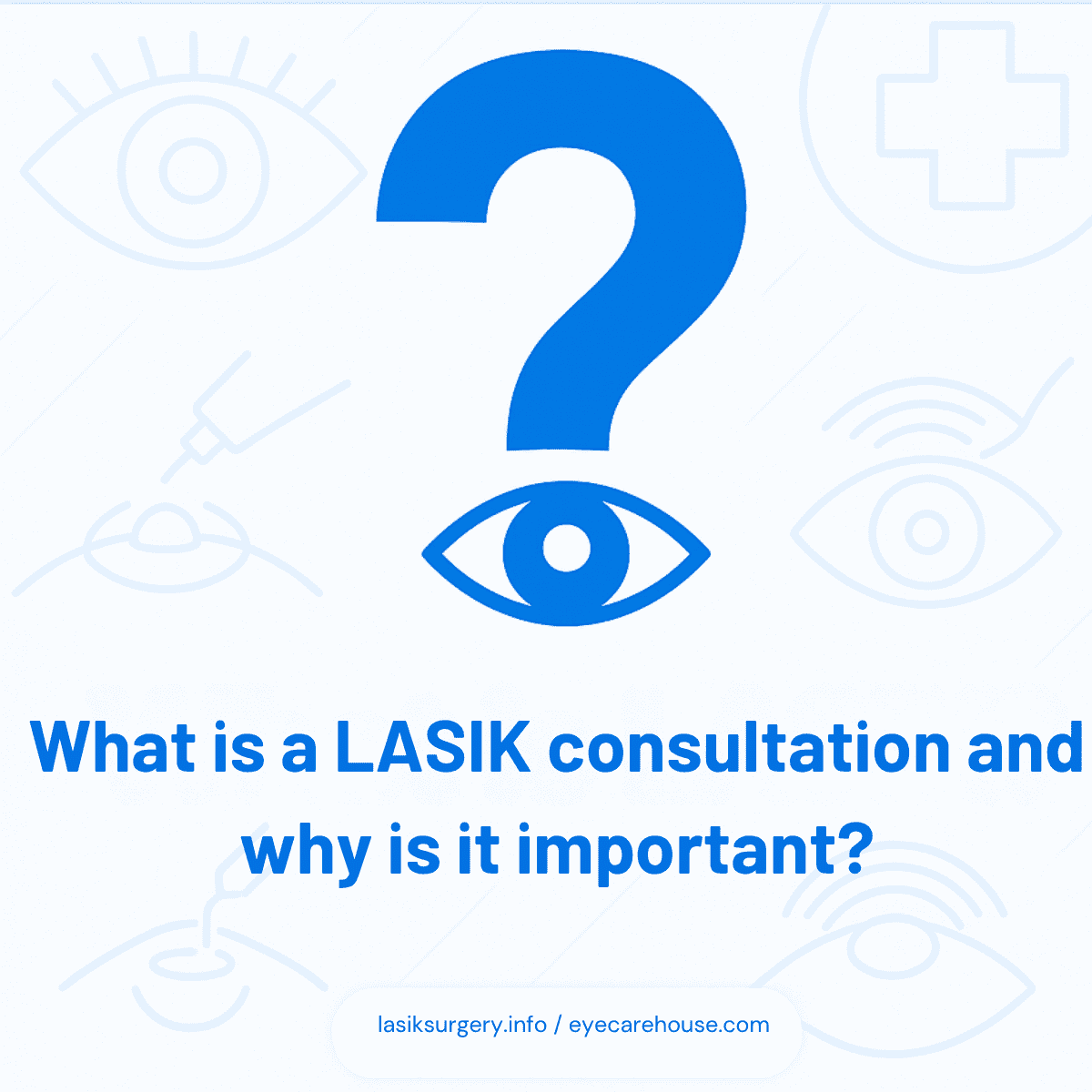
Bring your glasses, contact lens prescriptions, medical history, and a list of questions. Avoid wearing contact lenses for the time advised by your clinic.
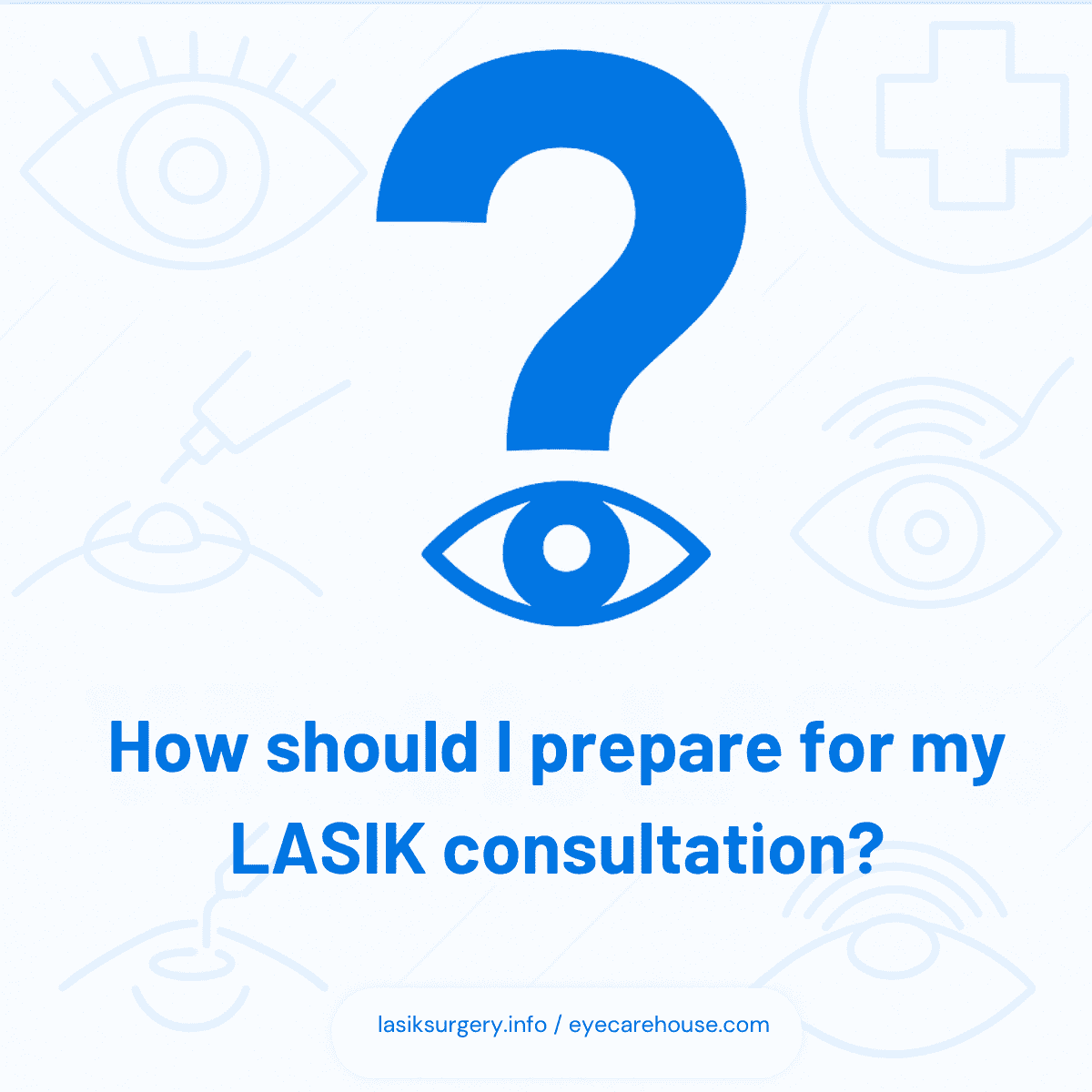
Contact lenses alter the shape of your cornea, affecting test accuracy. Stopping lens wear ensures precise measurements for candidacy evaluation.
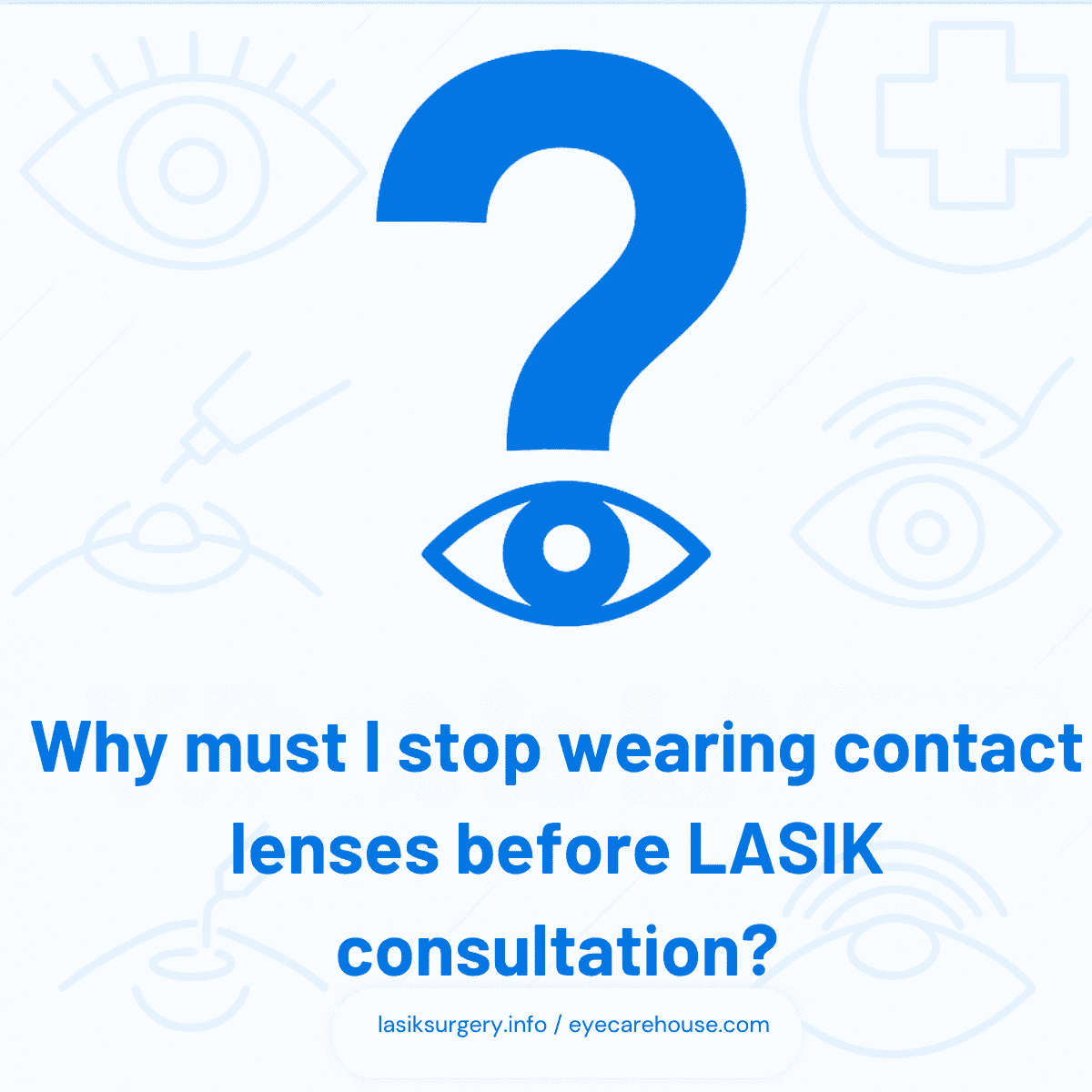
Common tests include visual acuity, corneal topography, pachymetry, pupil size, and dry eye assessments. These help determine LASIK eligibility.

A good LASIK candidate is over 18, has stable vision for 12+ months, healthy eyes, and a cornea thick enough for the procedure. Medical history matters too.
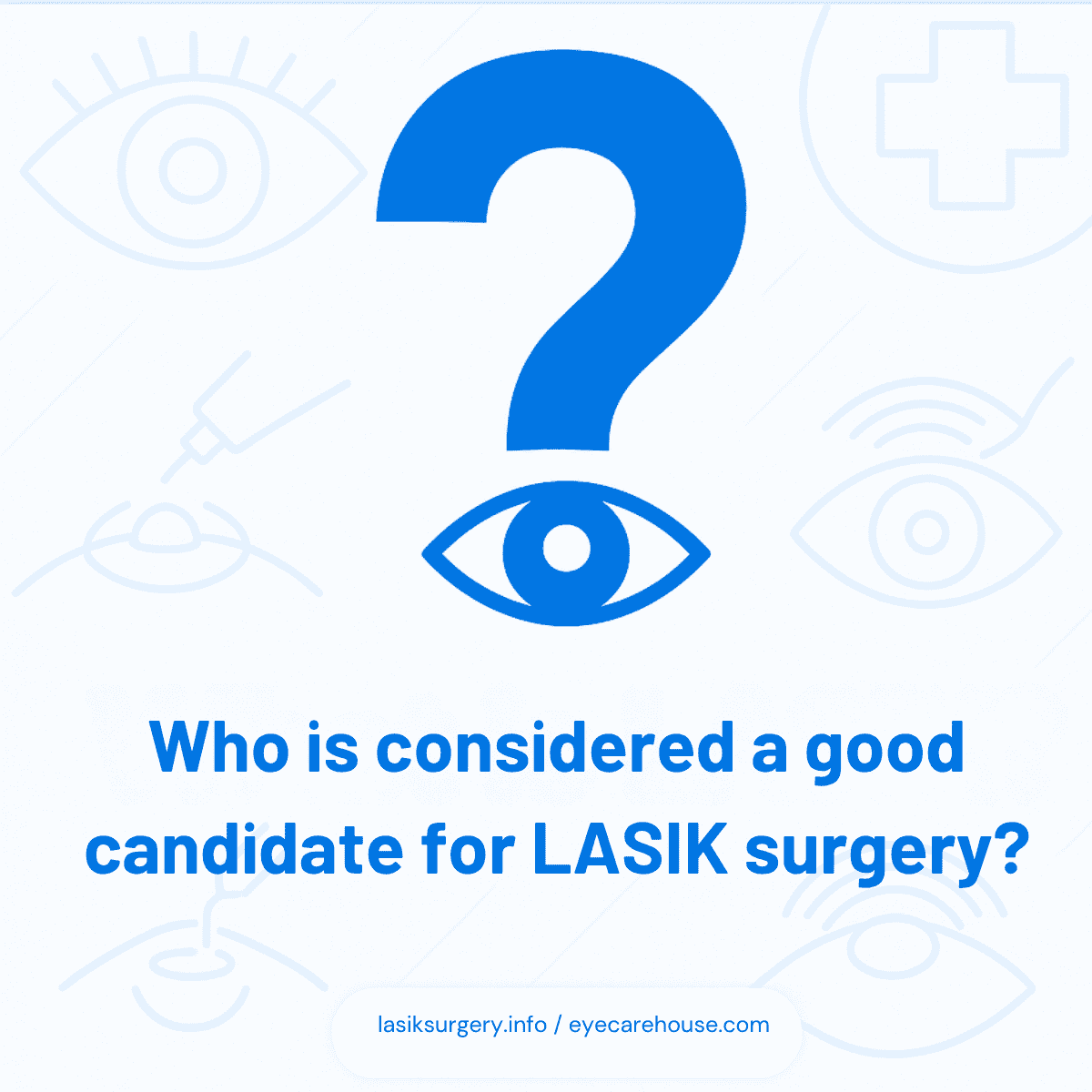
If you’re not eligible, your surgeon may recommend alternatives like PRK, EVO ICL, or Refractive Lens Exchange based on your eye condition.
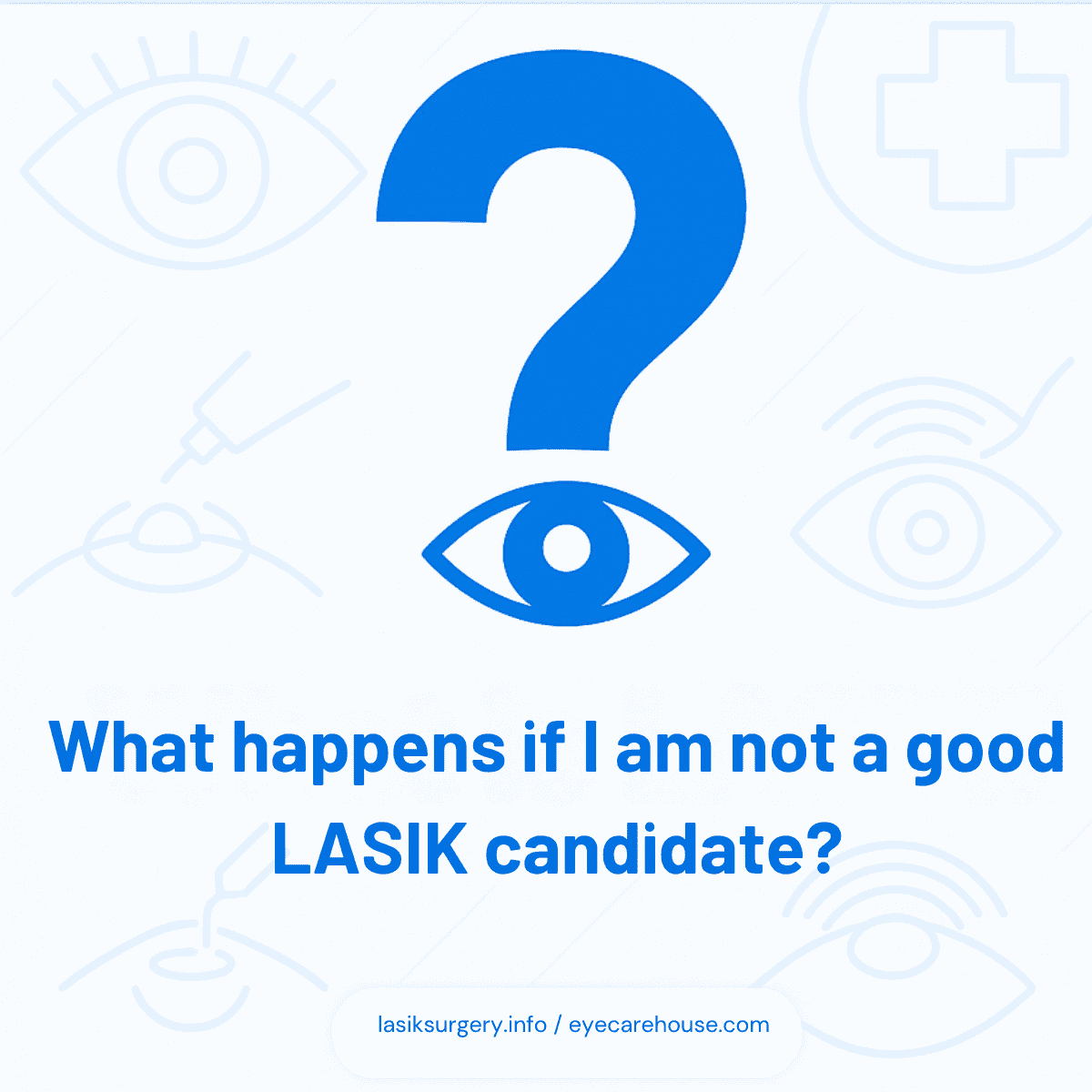
Modern LASIK uses femtosecond lasers to create the corneal flap and excimer lasers to reshape the cornea. These provide precision and safety.
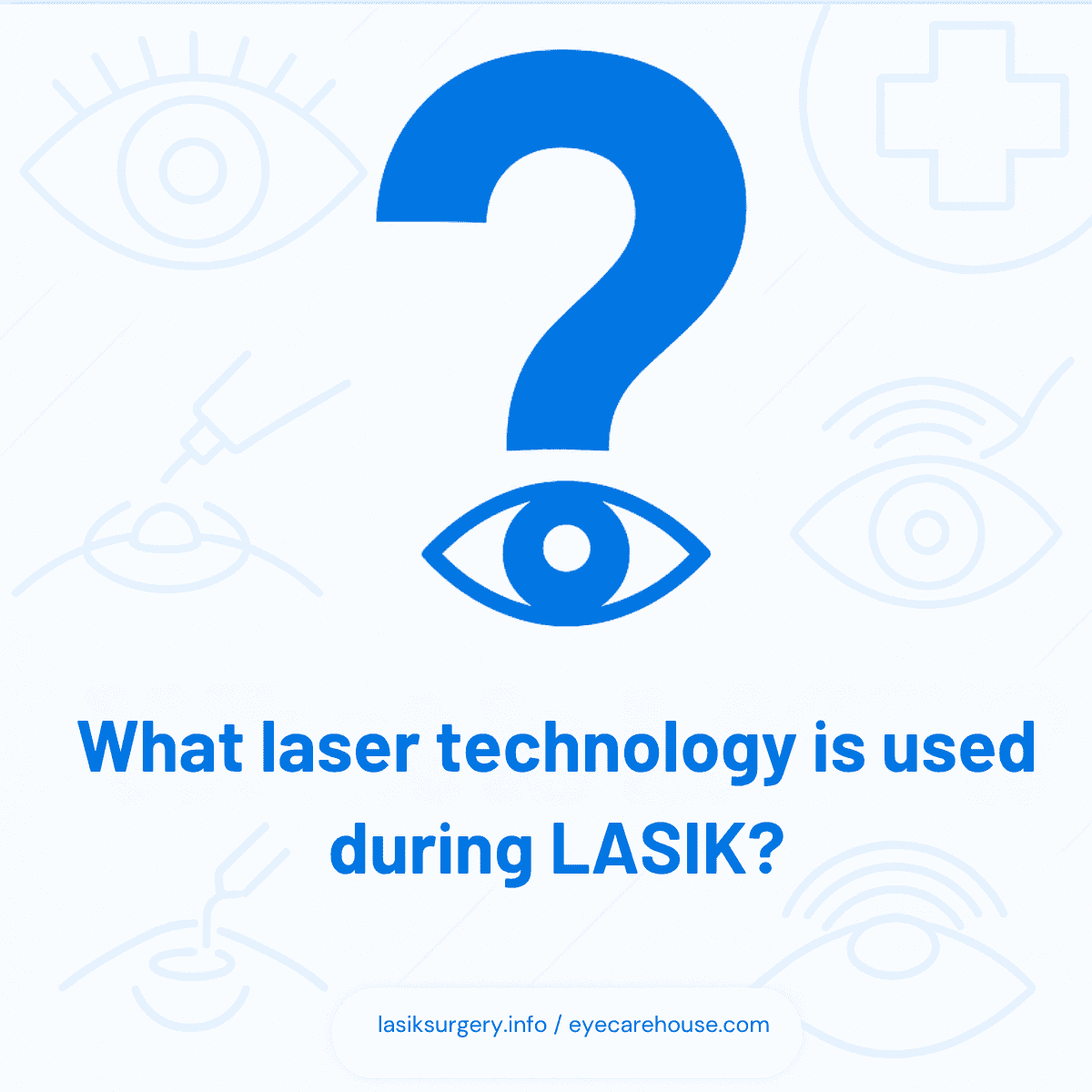
Ask about the surgeon’s experience, technology used, risks, recovery time, results, costs, and what happens if you’re not satisfied with the outcome.
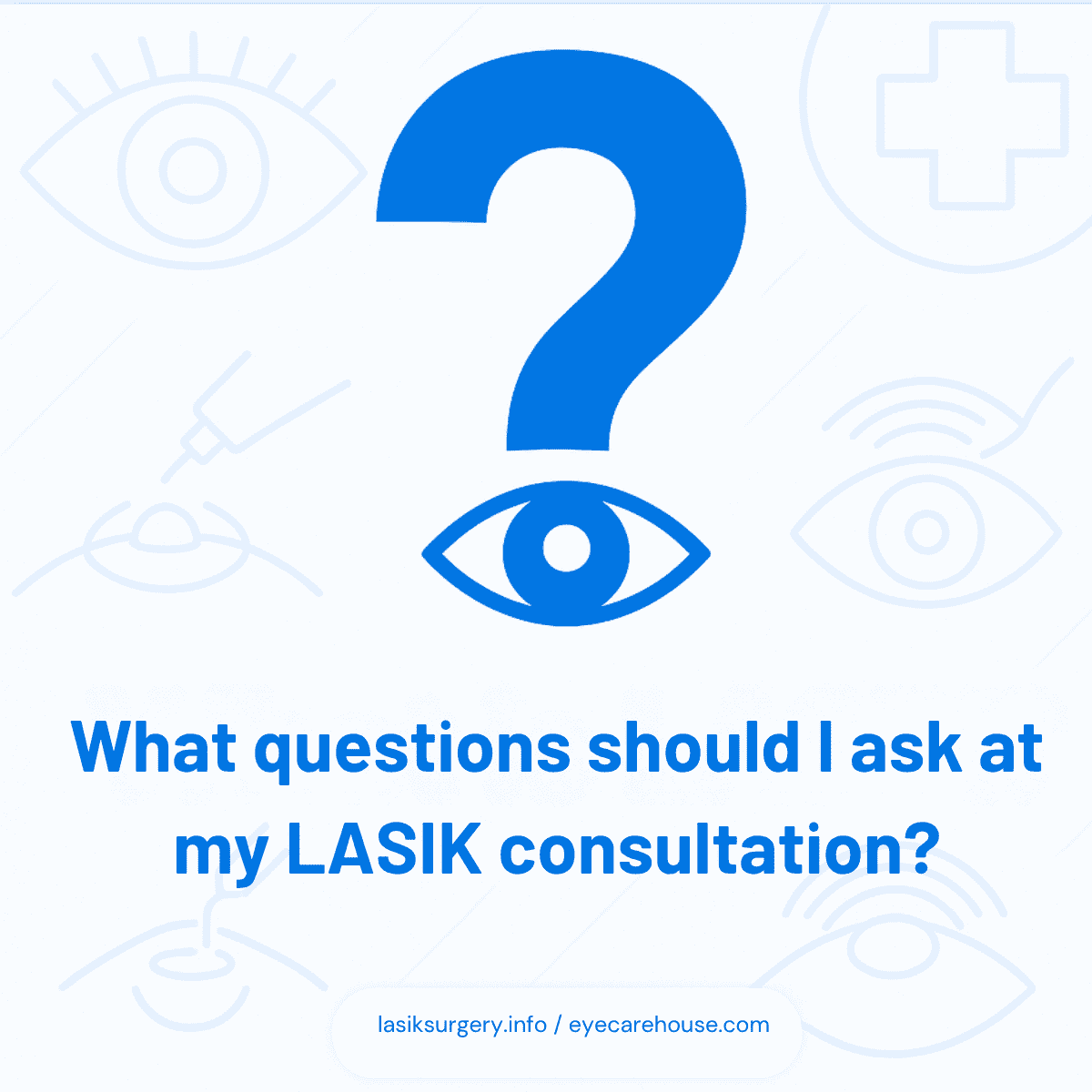
You’ll receive test results, a candidacy decision, and next steps. Clinics may discuss financing, give educational materials, or schedule follow-ups.
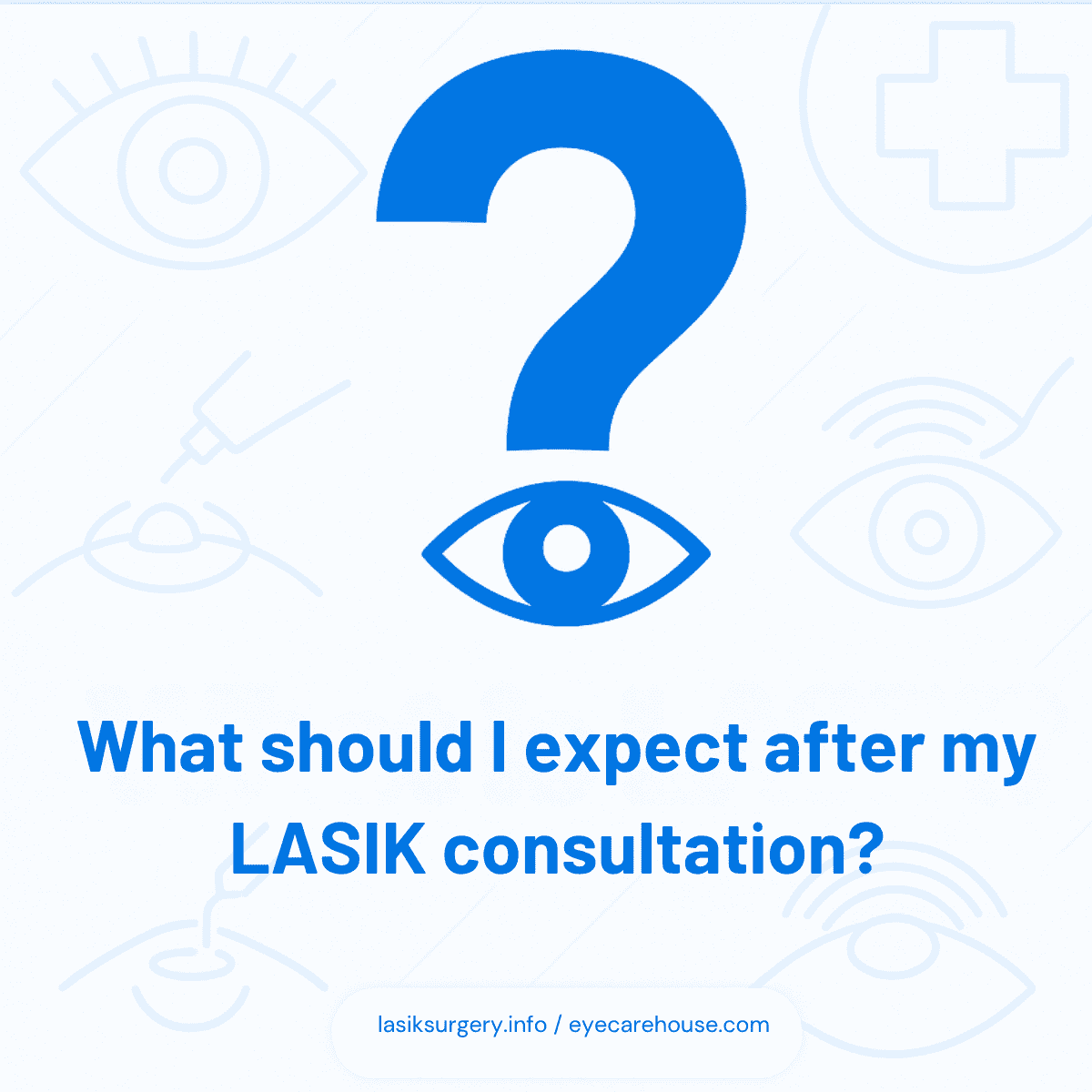
LASIK consultations are more in-depth, using advanced tests to assess surgical candidacy, while regular exams focus on prescription updates and basic eye health.
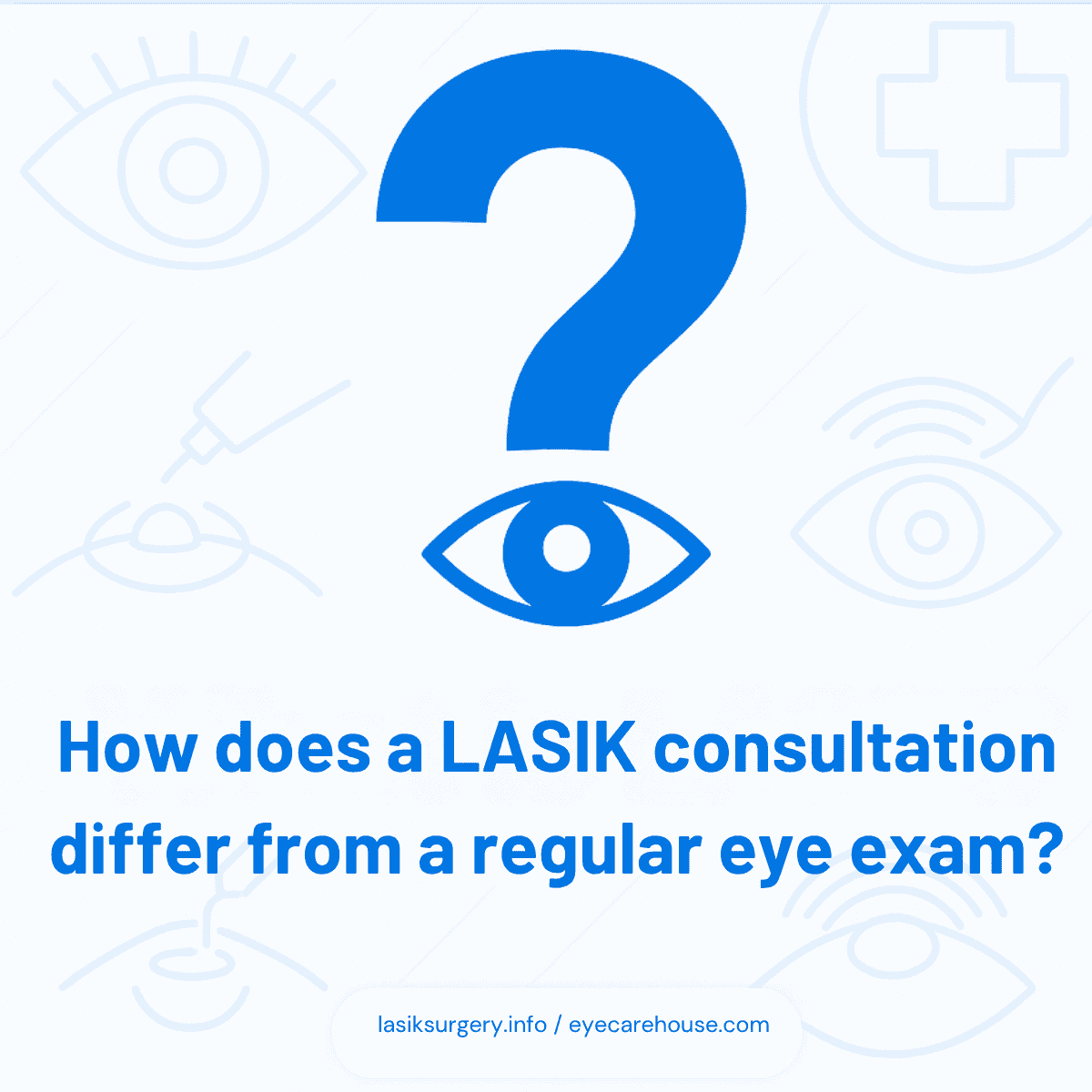


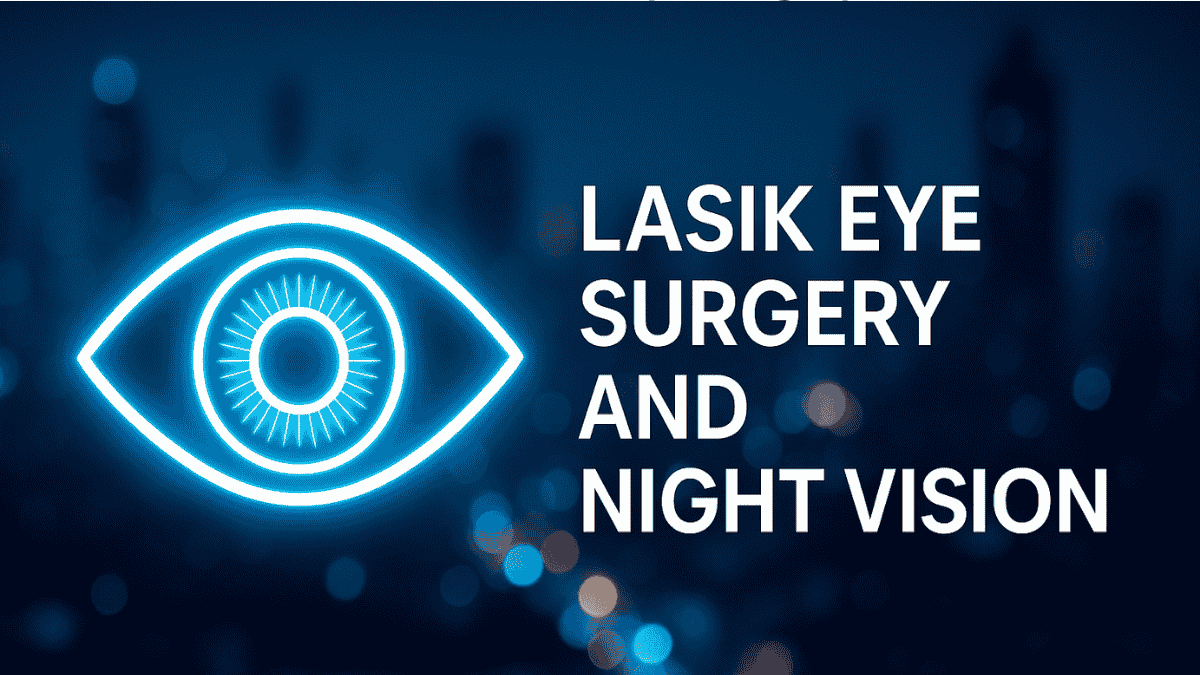

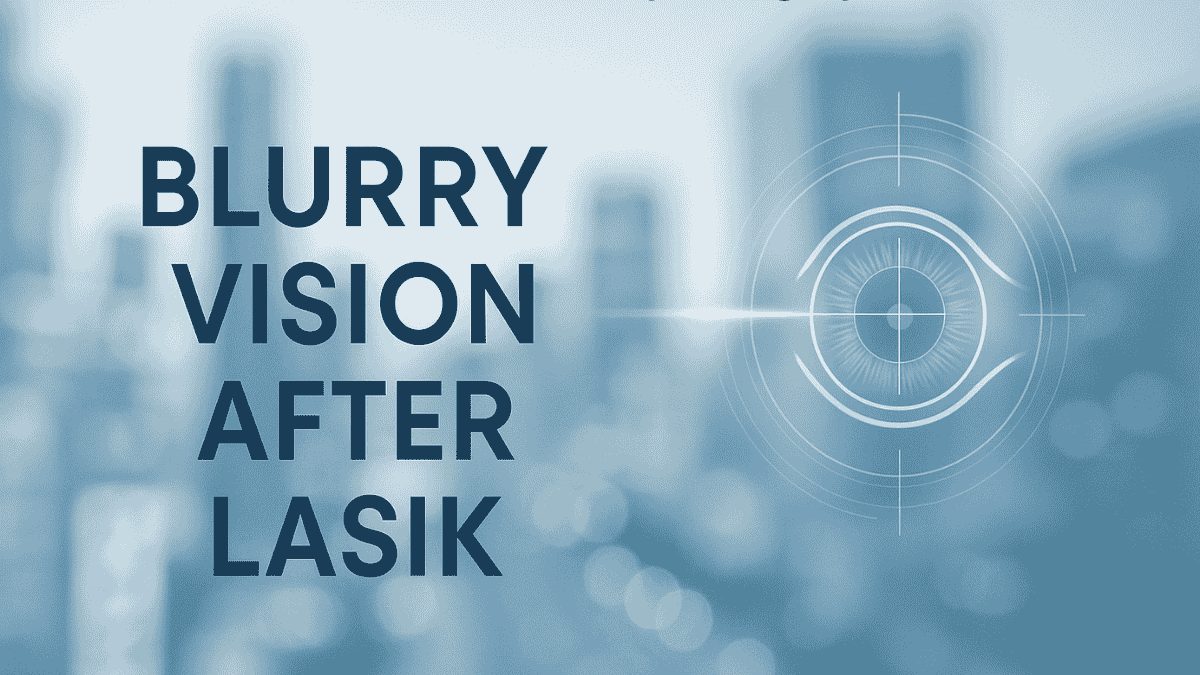
Is a consultation really necessary if I’ve already had a vision exam recently?
Does LASIK fix both nearsightedness and astigmatism in one procedure?